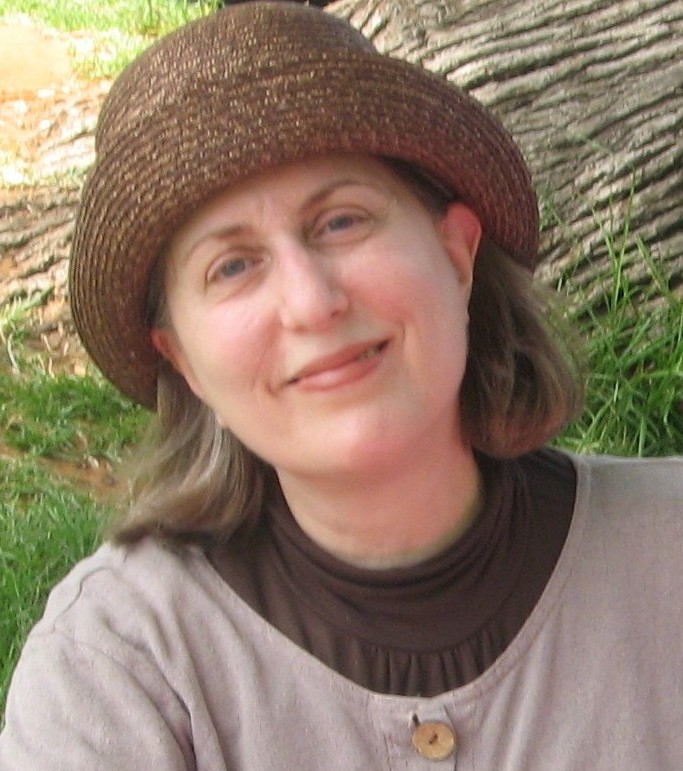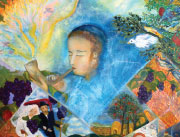The Bigger Picture


VIVID INNOCENCE The first thing one notices about an Esther Zibell oil painting is the color: the intense blue of a summer sky the rich red hues of a vase of flowers contrasted with the snowy-white head covering of a woman kindling the Shabbos lights. The unadulterated tones are reminiscent of a child’s palette of primary colors a world of innocence where joy reigns supreme (Photos: INFO NEEDED)
T he light rail station sign on Yafo Road may say Machaneh Yehudah but inside the nearby Saidoff art gallery it feels more like Paris than Jerusalem. French is the language of choice. Women greet each other with the classic kiss on both cheeks. And of course there’s the art the reason why we’ve come — paintings bursting with color energy and life.
Darting in and out between the invited guests is the artist herself Esther Zibell who greets friend and stranger alike with a dazzling smile. The opening of a new exhibit is a big event in any artist’s life but for Zibell the night is doubly sweet because she and her husband have just made aliyah. It’s actually the Zibells’ second go at making it in Eretz Yisrael. The first time they moved to Tzfas which is home to a famous Artists’ Quarter they were starry-eyed parents of a growing family; now the children are grown up and have families of their own. But if Zibell’s art is any indication she never really left Tzfas — the city of dreams and spiritual yearnings she can once again call home.
Color Wise
The first thing one notices about an Esther Zibell oil painting is the color: the intense blue of a summer sky the rich red hues of a vase of flowers contrasted with the snowy-white head covering of a woman kindling the Shabbos lights. The unadulterated tones are reminiscent of a child’s palette of primary colors a world of innocence where joy reigns supreme.
But then one notices the woman’s eyes similar to the eyes in many of Zibell’s paintings which are usually large and almond-shaped — and gazing somewhere off to the side. The bride enfolded in the dance circle who is both part of the simchah and wrapped in her own thoughts. The child in cheder who is bathed in a golden flow of Hebrew letters and literally floating on a cloud but whose eyes seem to reflect the 2 000 years of galus the Jewish People have endured. The shul candy man who is surrounded by a flock of children and accompanied by a flock of mysterious white doves which makes you wonder in what lofty realm this seemingly simple Yid really lives.

“My family tried to push me to take art lessons” Esther recalls “but I didn’t want them. I wanted to keep my personality. When I was young I drew from my imagination.”
The dichotomy isn’t accidental. In fact it goes back to Zibell’s childhood in France where she grew up in an assimilated family. She began to draw at the age of three. When she was five an aunt who had noticed and encouraged her talent brought the budding artist some pictures of paintings by the French artist Paul Gauguin who experimented with the emotive qualities of color in his work. Another aunt sent her calendars that had pictures of paintings by the European old masters which became another source of artistic instruction.
“My family tried to push me to take art lessons” Esther recalls “but I didn’t want them. I wanted to keep my personality. When I was young I drew from my imagination. I was an only child and a quiet person. I had only a few friends. I was in my own world and I could sit for hours drawing. It took me more time to improve my technique. But someone told me that when you’re obliged to sit and do something it spoils something inside you. There’s something that gets suppressed.”
Oops! We could not locate your form.







